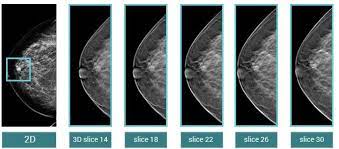
Mammogram Alamgordo In the desert of Alamogordo, New Mexico, a remarkable discovery was made that shed new light on the history of the ancient mammoth species. The finding of a well-preserved mammoth skeleton has not only provided a unique opportunity for paleontologists to study the anatomy and behavior of these giant creatures but also sparked public interest in the ancient world.
What Is Mammo Alamgordo:
Mammo Alamgordo The Alamogordo mammoth, as it has come to be known, is believed to have lived approximately 10,000 to 12,000 years ago during the Pleistocene epoch. This period marked a time of great change on the planet, including the extinction of many large mammal species and the appearance of modern human populations. The discovery of this mammoth has provided researchers with new insights into the environment and ecology of this time period, as well as the evolutionary process of the species itself.
The mammoth was first discovered during a routine construction project in the area. As the workers began to excavate the site, they uncovered what appeared to be large bones. Upon further investigation, it was revealed that the bones belonged to a well-preserved mammoth skeleton, providing a unique opportunity for research and study.
The mammoth skeleton was carefully excavated and removed from the site and transported to a laboratory for further study. The paleontologists were amazed by the level of preservation of the bones, which were still in remarkable condition after so many thousands of years. This has allowed for a more in-depth study of the anatomy of the mammoth, providing new information about its physical characteristics, such as its size, shape, and muscle mass.
What We Should Know About The Mammo Alamgordo:
The researchers also found evidence of injuries and trauma on the bones, indicating that the mammoth may have suffered from a number of physical challenges throughout its life. This has given scientists a deeper understanding of the lifestyle and behavior of the species, including its interactions with other animals and its ability to survive in its environment.
In addition to the bones, the excavation of the site also uncovered a number of artifacts, including stone tools and other evidence of human activity. This has provided evidence of the coexistence of humans and mammoths during the Pleistocene epoch, and has raised new questions about the relationship between these two species.
Mammo Alamgordo How To Get It?
The discovery of the Alamogordo mammoth has been a major event in the world of paleontology, and has generated a great deal of public interest. The well-preserved nature of the bones has allowed for an in-depth study of this ancient species, providing new insights into its anatomy, behavior, and evolution. In addition, the discovery has also highlighted the importance of continued research and study in the field of paleontology, and has provided a unique opportunity for scientists to deepen their understanding of the ancient world.
The findings of the Alamogordo mammoth have been widely published in scientific journals and have been the subject of numerous popular science articles. The discovery has also been featured in a number of museum exhibitions, including a major traveling exhibit that has toured the United States and Europe.
In conclusion, the discovery of the Alamogordo mammoth has provided a unique opportunity for scientists to delve into the history of this ancient species, and has shed new light on the environment, ecology, and behavior of the Pleistocene epoch. This discovery has also generated a great deal of public interest and has sparked new discussions about the evolution of the species and the coexistence of humans and mammoths. The research continues, and it is likely that the Alamogordo mammoth will continue to play an important role in shaping our understanding of the ancient world for years to come.
Mammo Alamgordo How does Its Work?
The discovery of the Alamogordo mammoth was a result of a routine construction project in Alamogordo, New Mexico. During the excavation process, large bones were uncovered that were later determined to be part of a well-preserved mammoth skeleton.
After the discovery of the bones, paleontologists were brought in to carefully excavate and remove the skeleton from the site. The bones were then transported to a laboratory for further study and analysis.
The process of studying the Alamogordo mammoth involved a variety of techniques, including X-rays, CT scans, and microscopic analysis. These methods allowed researchers to examine the anatomy and structure of the bones, as well as identify any signs of injury or trauma.
In addition to the study of the bones themselves, the site of the discovery was also analyzed to determine the environmental conditions in which the mammoth lived and died. This included analyzing soil samples, sediment layers, and other geological features in the area.
The findings of the study were then published in scientific journals, and presented at conferences and other events. This has allowed the scientific community to learn from the discovery and build upon our understanding of the mammoths and the Pleistocene epoch.

If you want to get amazing benefits by using this link
Conclusion:
Overall, the discovery of the Alamogordo mammoth and the subsequent study of the skeleton has been a collaborative effort between construction workers, paleontologists, and researchers in various fields. The process has involved a combination of excavation, laboratory analysis, and scientific study, all aimed at uncovering new information about this ancient species.

